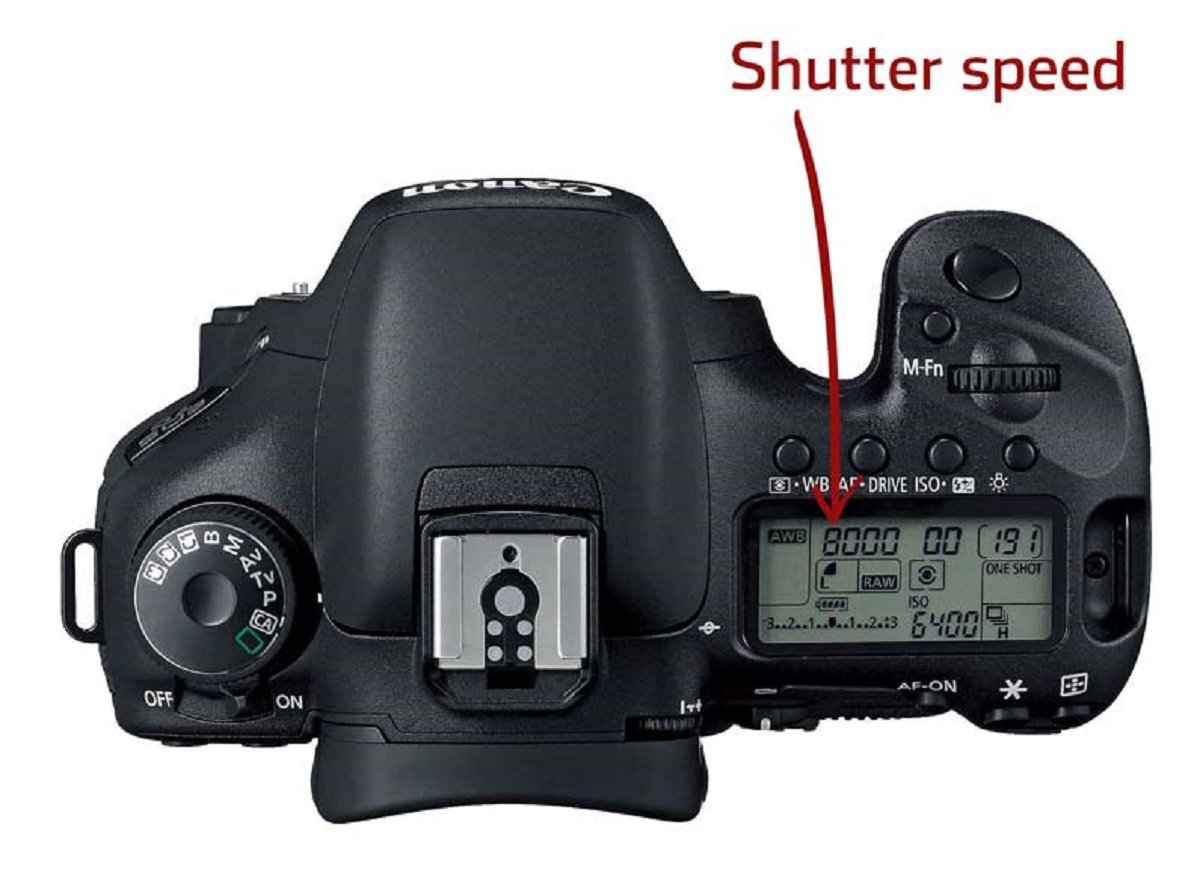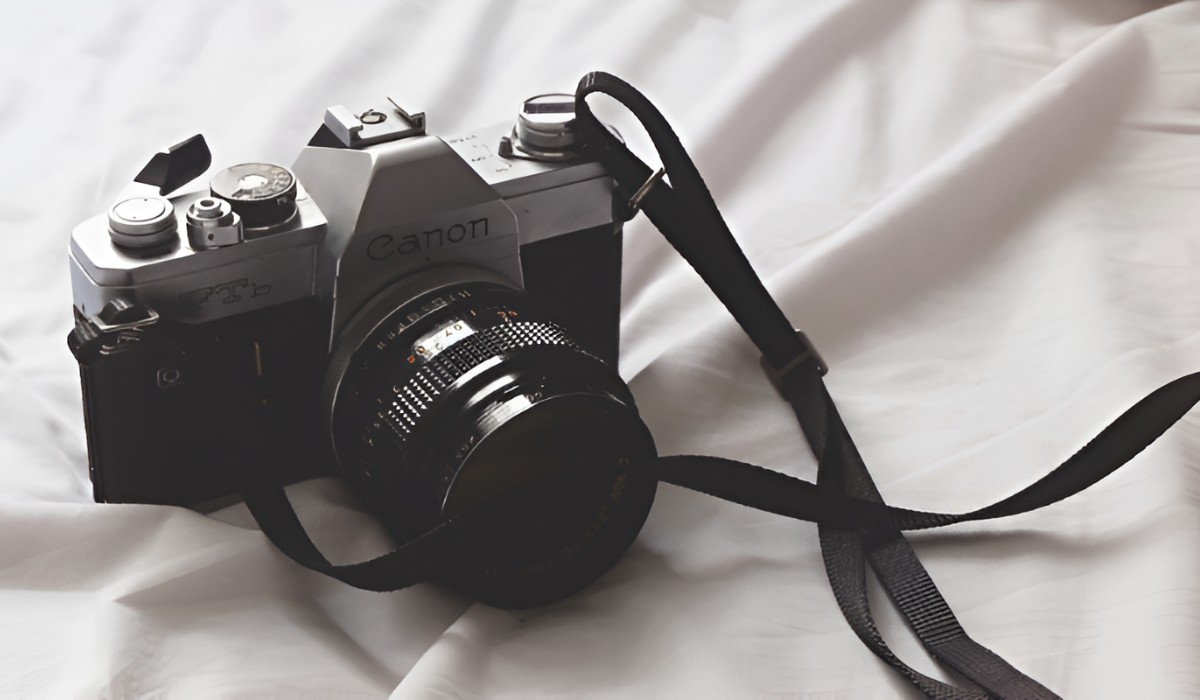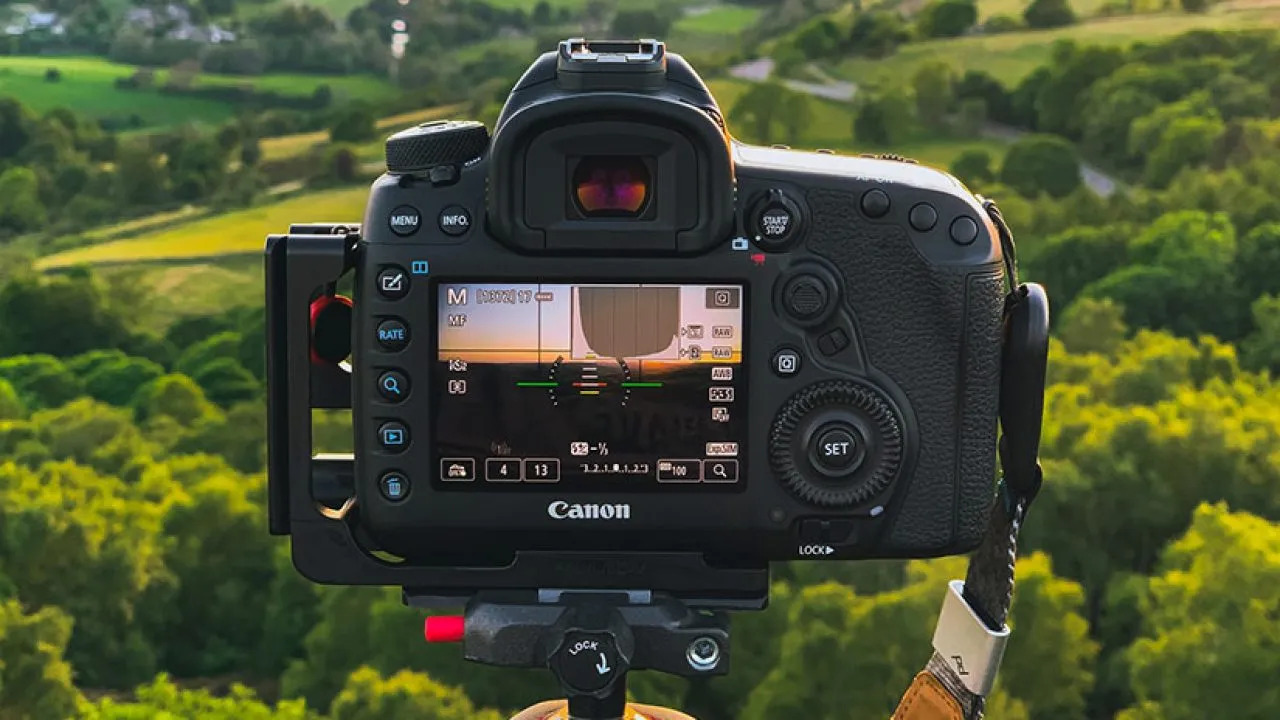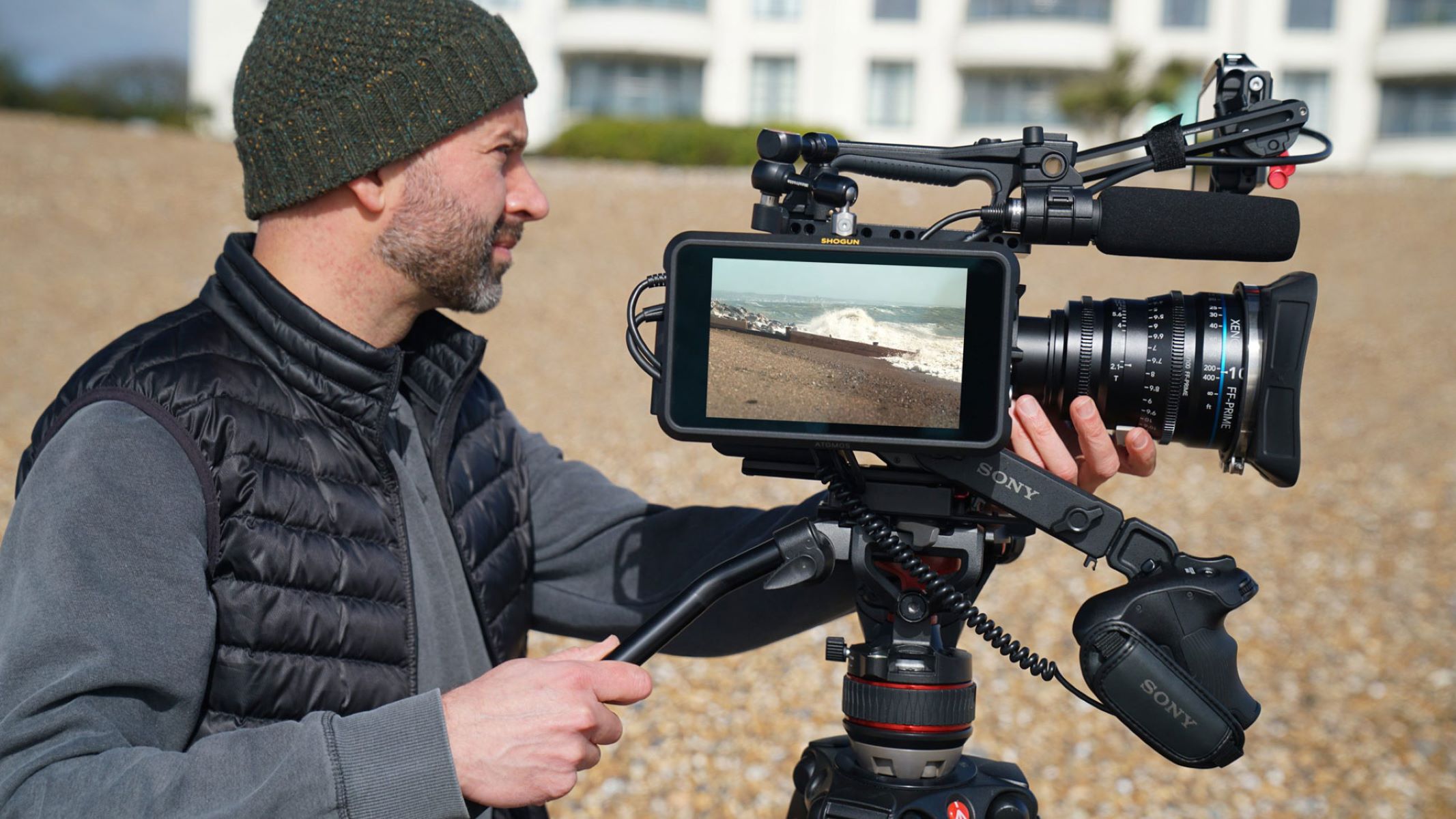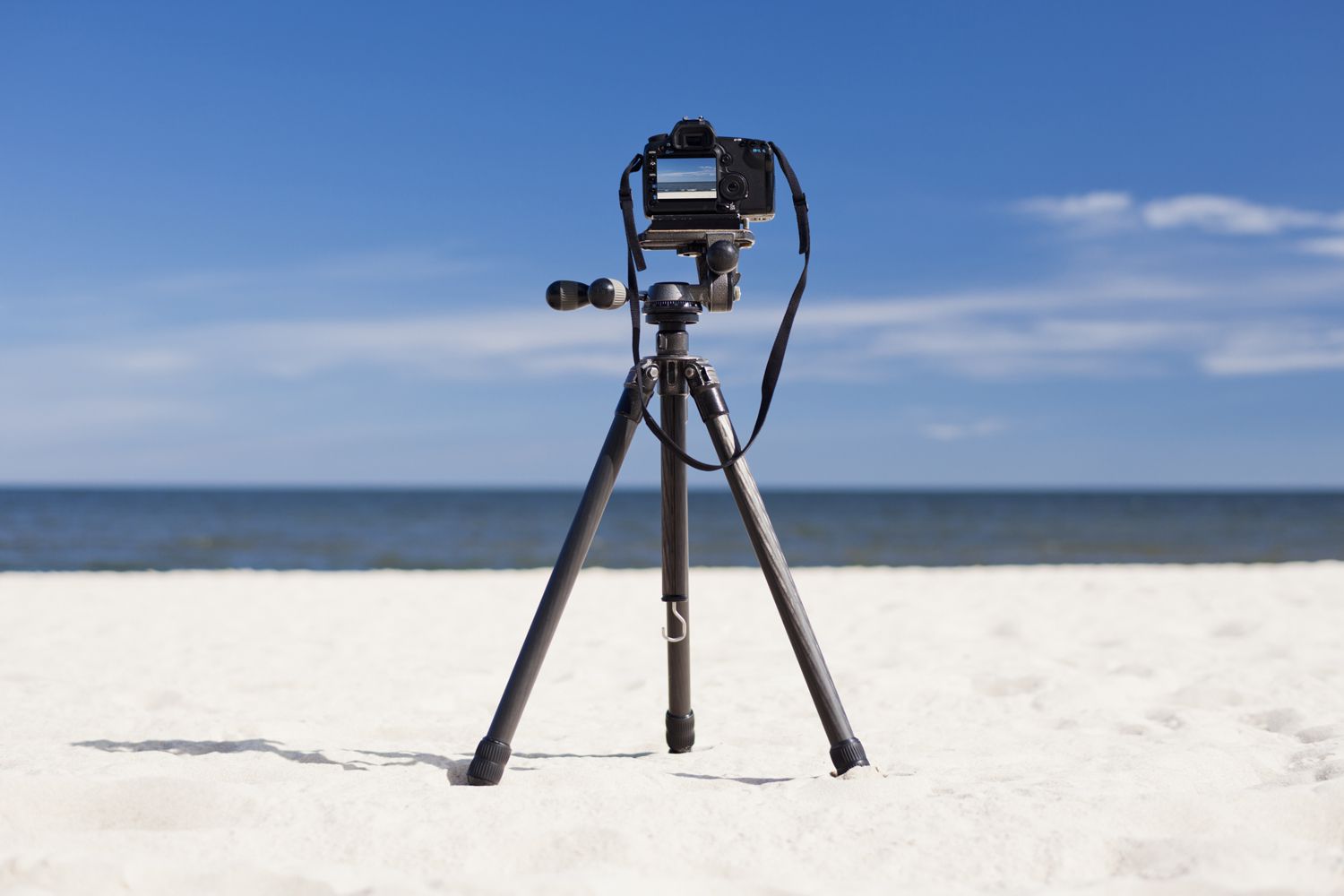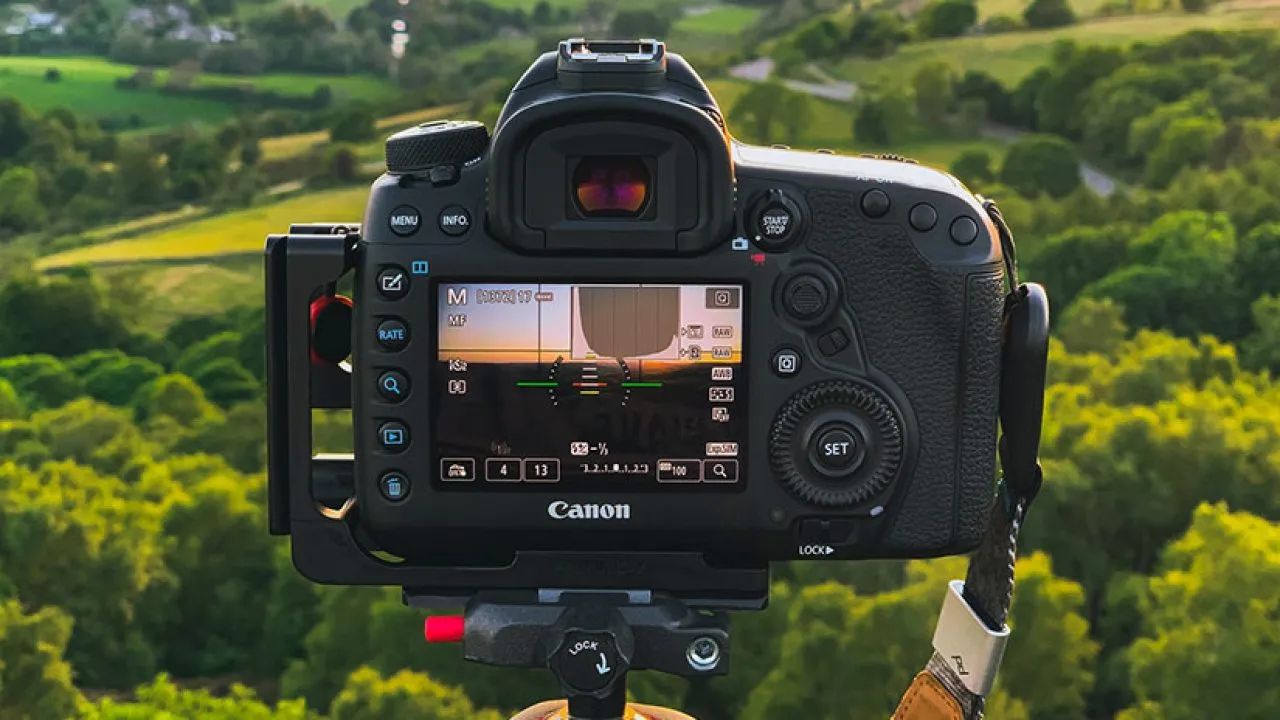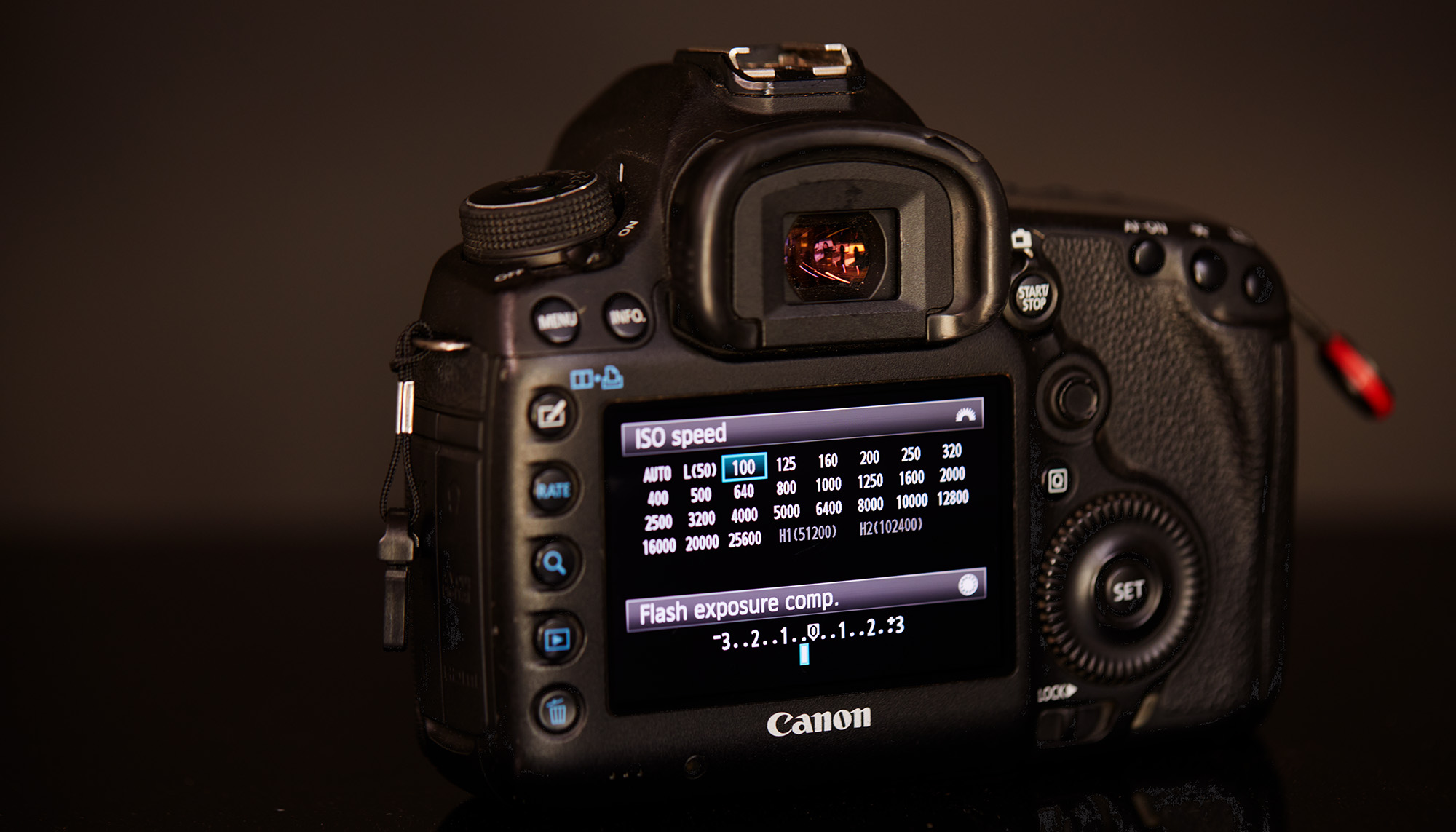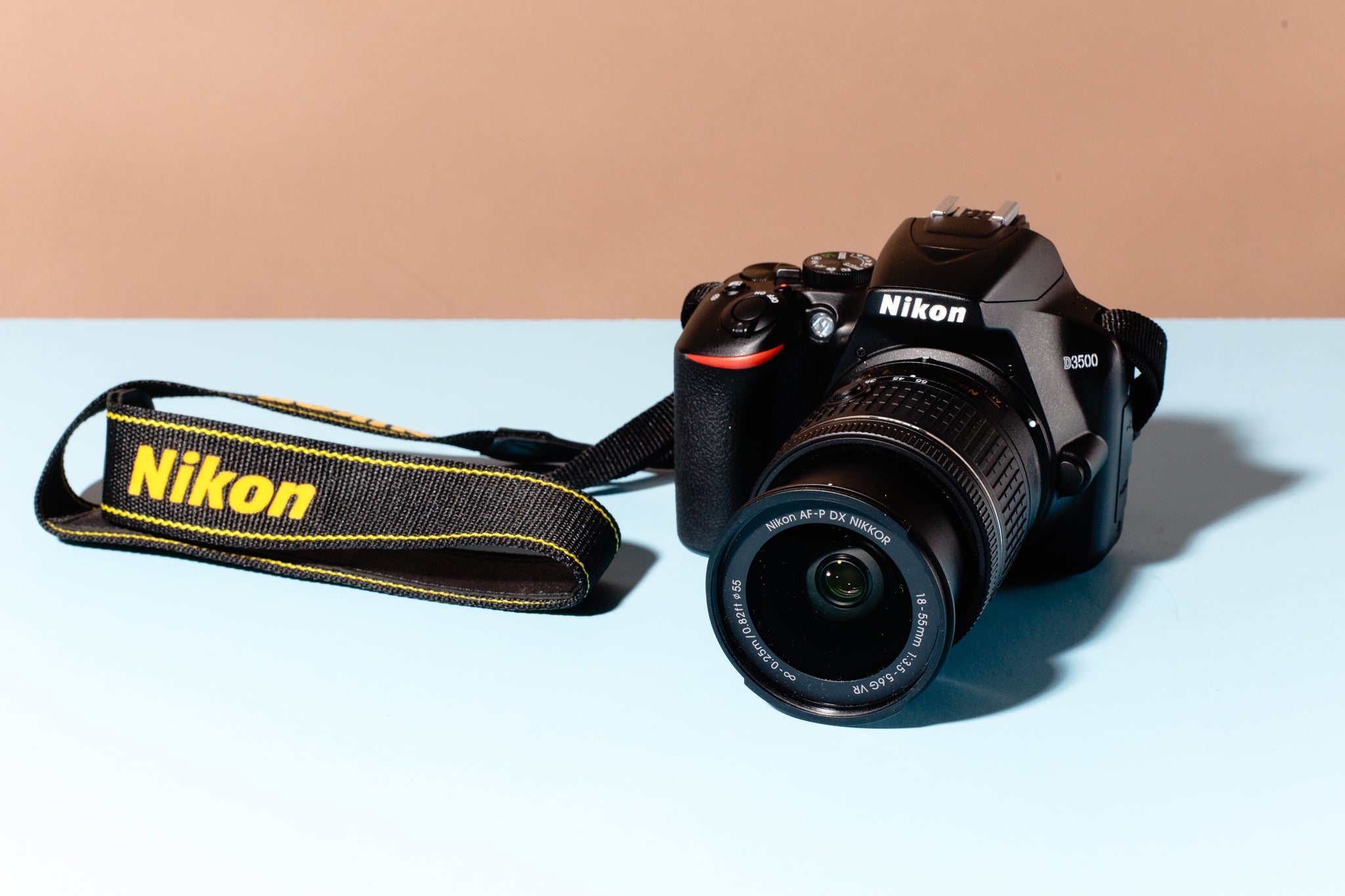Introduction
Welcome to the world of digital photography, where capturing moments is just a click away. In the realm of digital cameras, one of the key elements that significantly impacts the outcome of your photographs is the shutter speed. Whether you are a photography enthusiast or a professional, understanding the concept of shutter speed is essential to achieve the desired results in your images.
Shutter speed refers to the amount of time that the camera’s shutter is open, allowing light to enter and hit the camera’s image sensor. It is measured in seconds or fractions of a second. The shutter speed determines the exposure of the image and plays a crucial role in capturing motion in your photographs.
Understanding how shutter speed works and its effects can help you take breathtaking photos in various settings and situations. It allows you to freeze a fast-moving subject in sharp focus or create beautiful motion blur to convey a sense of movement.
Shutter speed is one of the three elements of the exposure triangle, along with aperture and ISO. These three factors work together to control the amount of light that reaches the camera’s sensor and ultimately determine the brightness and clarity of your images.
In this article, we will delve into the intricacies of shutter speed and explore how it affects your photographs. We will also discuss how to choose the right shutter speed for different situations and provide some tips for using it creatively to elevate your photography skills.
What is Shutter Speed?
Shutter speed is a fundamental concept in photography that refers to the amount of time the camera’s shutter remains open when taking a picture. It determines the duration of exposure, or how long the camera’s image sensor is exposed to light.
Measured in seconds or fractions of a second, shutter speed ranges from fast to slow. A fast shutter speed, such as 1/1000th of a second, allows only a brief moment of exposure, while a slow shutter speed, like 1/10th of a second or slower, keeps the shutter open for a more extended period.
The primary function of the shutter speed is to control the amount of light that reaches the camera’s image sensor. When the shutter speed is fast, the sensor receives less light, resulting in a darker image. Conversely, with a slower shutter speed, more light is captured, resulting in a brighter image.
Shutter speed also possesses another critical characteristic – its impact on motion. Depending on the chosen shutter speed, it can either freeze the motion in a photograph or create a sense of motion blur.
In essence, shutter speed is a tool that enables photographers to control both the exposure and the perception of motion in their images. By adjusting the shutter speed, you can capture a moving subject in sharp detail or convey an artistic sense of movement.
Understanding the relationship between shutter speed and motion is crucial for capturing dynamic scenes. Fast-moving subjects, such as athletes or wildlife, often require fast shutter speeds to freeze their motion. On the other hand, using slower shutter speeds can blur the motion, making waterfalls appear silky or creating light trails from moving vehicles.
In the next section, we will explore how shutter speed works in digital cameras and its relationship with exposure, helping you further understand its importance in photography.
How Shutter Speed Works in Digital Cameras
Understanding how shutter speed works in digital cameras is essential to harness its power in capturing stunning photographs. When you press the shutter button, the camera’s shutter opens to expose the image sensor to light. The duration for which the shutter remains open is determined by the selected shutter speed.
Modern digital cameras have a wide range of shutter speed options, typically ranging from fractions of a second to several seconds. Some advanced cameras even have a Bulb mode, allowing you to manually control how long the shutter remains open.
When you set a fast shutter speed, such as 1/1000th of a second, the shutter stays open for a very short duration. This is ideal for capturing fast-moving subjects with crisp detail since it freezes the action. It is particularly useful in sports photography or capturing wildlife in motion.
On the other hand, when you choose a slow shutter speed, such as 1/10th of a second or longer, the shutter remains open for a more extended period. This allows more light to reach the camera’s sensor, resulting in a brighter image. Additionally, slower shutter speeds introduce motion blur when there is movement during the exposure, creating a sense of motion.
It’s worth noting that very slow shutter speeds, such as several seconds or more, may require the use of a tripod or other camera stabilization techniques to prevent unwanted camera shake resulting in blurry images. This is because even the slightest movement of the camera during a long exposure can cause significant blur.
Most digital cameras offer a range of automatic or semi-automatic shooting modes, such as Shutter Priority or Tv mode, where you can select the desired shutter speed while the camera takes care of other exposure settings. This can be particularly useful when you want to capture a specific motion effect without worrying about the aperture or ISO settings.
By understanding how shutter speed affects the exposure and motion in your photographs, you can effectively utilize this feature to create compelling imagery. In the following section, we will delve deeper into how shutter speed interacts with the other components of the exposure triangle.
The Relationship Between Shutter Speed and Exposure
The relationship between shutter speed and exposure is crucial in photography, as it determines the amount of light that reaches the camera’s image sensor. Shutter speed plays a significant role alongside aperture and ISO, which together comprise the exposure triangle.
When it comes to exposure, shutter speed controls the duration for which light is allowed to hit the camera’s sensor. A faster shutter speed, such as 1/1000th of a second, means that the shutter remains open for a shorter time, allowing less light to enter the camera. This results in a darker image since the sensor receives less light during the exposure.
Conversely, a slower shutter speed, like 1/10th of a second or longer, keeps the shutter open for a more extended period, allowing more light to reach the sensor. This leads to a brighter image as the sensor captures a greater amount of light during the exposure.
The interaction between shutter speed and exposure becomes particularly evident in different lighting conditions. In low light situations, such as during sunset or in dimly lit environments, using a slower shutter speed helps to gather more light, preventing the image from appearing too dark. However, using a slower shutter speed can also increase the risk of motion blur if the camera or subject moves during the exposure.
On the other hand, in bright lighting conditions, a faster shutter speed can help to avoid overexposure and maintain proper exposure levels. This is especially critical when photographing subjects with strong light sources, such as the sun or bright artificial lights.
It’s important to note that shutter speed affects not only the exposure but also the perception of motion in your images. By selecting the appropriate shutter speed, you can freeze fast-moving subjects in crisp detail or create motion blur to convey a sense of movement.
Understanding the relationship between shutter speed and exposure allows you to have greater control over the brightness and clarity of your images. It enables you to adapt to different lighting conditions and creatively capture motion in your photographs. In the following sections, we will explore how shutter speed impacts motion blur and discuss techniques for using it effectively.
How Shutter Speed Affects Motion Blur
Shutter speed plays a significant role in capturing motion in photography. By adjusting the shutter speed, you can either freeze a fast-moving subject or create a sense of motion blur in your images.
When it comes to motion blur, the key factor to consider is the duration of time that the camera’s shutter remains open. Slower shutter speeds, such as 1/10th of a second or longer, allow for a more extended exposure time, resulting in a greater possibility of capturing movement during that time.
Using a slower shutter speed can be beneficial in situations where you want to suggest movement and create an artistic effect. For example, photographing a flowing river with a slow shutter speed can create a smooth, silky effect, emphasizing the motion of the water. Similarly, capturing moving lights at night with a slow shutter speed can result in beautiful light trails.
On the other hand, if your intention is to capture a fast-moving subject with sharp detail, a faster shutter speed is essential. Faster shutter speeds, such as 1/1000th of a second or faster, minimize the exposure time and effectively freeze the motion in your images. This is particularly useful in sports photography or when photographing wildlife in action.
It’s important to keep in mind that using slower shutter speeds increases the risk of camera shake-induced blur. When shooting with slower shutter speeds, it is crucial to use a tripod or other stabilization techniques to ensure the camera remains steady during the exposure, while the subject is allowed to move and create motion blur.
Experimenting with different shutter speeds can yield fascinating results in capturing motion. Try adjusting the shutter speed and capturing moving objects or scenes to see the varying effects. By mastering the relationship between shutter speed and motion blur, you can add a dynamic and artistic touch to your photographs.
Next, we will explore how high shutter speeds can freeze fast action and allow you to capture fleeting moments in sharp detail.
Freezing Fast Action with High Shutter Speed
One of the remarkable abilities of high shutter speed is its capability to freeze fast action and capture fleeting moments in sharp detail. When you encounter a situation where your subject is moving quickly, using a high shutter speed can be crucial to ensure that you capture the action with precision.
High shutter speeds, typically ranging from 1/1000th of a second and faster, enable you to freeze the motion of your subject, providing you with images that showcase the exact moment in time. This is particularly invaluable in sports photography, wildlife photography, or any situation where your subject is in fast motion.
When using a high shutter speed, the exposure time becomes incredibly short. Because of this, even the fastest-moving subjects will appear sharp and static in your photographs. The details captured in these frozen moments can be remarkably vivid, allowing you to see the intricate movements, expressions, or positions of your subject.
For example, when photographing a soccer match, a high shutter speed can help you capture the player mid-kick, freezing the moment when their foot connects with the ball. The result is a crisp image that showcases the intensity and energy of that precise instant.
It’s important to note that when shooting with high shutter speeds, you may need to consider other factors such as lighting conditions and lens capabilities. In low-light situations, a high shutter speed might require you to increase the ISO or open up the aperture to allow more light into the camera. Additionally, some lenses have limitations on their maximum shutter speed synchronization, so be sure to check your camera’s specifications.
Take advantage of the high shutter speeds available on your digital camera to freeze fast action and capture incredible moments with precision. Experiment with different shutter speeds to find the optimal setting for the specific action you are photographing.
In the next section, we will explore how slow shutter speeds can create stunning motion blur effects and add a sense of movement to your photographs.
Creating Motion Blur with Slow Shutter Speed
A slow shutter speed can be a powerful tool in photography, allowing you to create stunning motion blur effects and convey a sense of movement in your images. By deliberately introducing blur into your photographs, you can add a dynamic and artistic touch to your compositions.
When you use a slow shutter speed, typically 1/10th of a second or slower, the camera’s shutter remains open for a more extended period. This allows moving subjects or elements in your scene to leave a trail of light as they pass through the frame, resulting in the appearance of motion blur.
One popular application of slow shutter speed is in long exposure photography. By using a slow shutter speed, you can capture the movement of elements such as flowing water, moving clouds, or even the streaks of light created by passing cars at night. This technique can create dreamy, ethereal images that capture the passage of time.
To achieve the best results with slow shutter speed photography, it’s essential to stabilize your camera to minimize unwanted camera shake. Using a tripod is highly recommended, as it provides the stability required for long exposures. Additionally, utilizing a remote shutter release or the camera’s self-timer can help prevent any movement caused by pressing the shutter button.
When photographing scenes with slow shutter speeds, it’s important to consider the overall composition and the desired effect. Experiment with different shutter speeds to find the balance between capturing enough movement to create blur while still retaining some level of detail in the non-moving elements of the scene.
It’s worth noting that using slow shutter speeds in bright lighting conditions might require the use of neutral density filters. These filters help reduce the amount of light entering the camera, allowing for longer exposures without overexposing the image. Neutral density filters come in various strengths and can be adjusted to fit the specific lighting conditions you are working with.
By effectively utilizing slow shutter speeds, you can add a sense of motion and dynamism to your photographs. Whether it’s capturing the flow of water, the movement of people in a crowded street, or creating light trails at night, incorporating motion blur can transform an ordinary scene into a visually captivating image.
In the next section, we will explore the different values and terminology associated with shutter speed, helping you understand and navigate the technical aspects of this essential photography setting.
Understanding Shutter Speed Values and Terminology
Understanding the values and terminology associated with shutter speed is crucial for mastering this fundamental aspect of photography. Here are some key terms and concepts to help you navigate the technical aspects of shutter speed:
- Shutter Speed Values: Shutter speed is typically expressed as a fraction of a second. For example, 1/1000th of a second is a fast shutter speed, while 1/10th of a second or slower is considered a slow shutter speed. The higher the denominator in the fraction, the faster the shutter speed and the shorter the duration of exposure.
- Bulb (B) Mode: Some cameras have a Bulb mode, indicated by the letter “B” on the mode dial. When using Bulb mode, the shutter remains open for as long as the shutter button is pressed, allowing for exposures longer than the maximum set shutter speed.
- Long Exposure: This term refers to using a slow shutter speed, typically several seconds or more, to capture an extended period of time in a single image. Long exposures are often used in night photography, astrophotography, or when intentionally creating motion blur effects.
- Fast Shutter Speed: A fast shutter speed refers to a short duration of exposure, typically faster than 1/1000th of a second. Fast shutter speeds are used to freeze fast-moving subjects and capture sharp details.
- Slow Shutter Speed: Conversely, a slow shutter speed refers to a longer duration of exposure, typically slower than 1/10th of a second. Slow shutter speeds are used to capture motion blur and convey a sense of movement in your images.
- Shutter Priority (Tv) Mode: Many cameras offer a Shutter Priority mode, often identified by “Tv” on the mode dial. In this mode, you set the desired shutter speed, and the camera automatically adjusts the other exposure settings, such as aperture and ISO, to achieve the correct exposure.
Understanding the values and terminology associated with shutter speed allows you to make informed decisions when adjusting this setting on your camera. It gives you the flexibility to freeze motion or create artistic effects by manipulating exposure time.
In the next section, we will discuss how to choose the right shutter speed for different situations and provide practical tips for using shutter speed creatively in your photography.
Choosing the Right Shutter Speed for Different Situations
Choosing the right shutter speed is crucial for achieving the desired results in your photography. The appropriate shutter speed depends on various factors, including the subject, lighting conditions, and the effect you want to capture. Here are some guidelines to help you choose the right shutter speed for different situations:
- Freezing Fast Action: When photographing fast-moving subjects, such as athletes or wildlife, a fast shutter speed is essential to freeze the action in sharp detail. Start with a shutter speed of around 1/1000th of a second and adjust accordingly to ensure your subject remains crisp and clear.
- Capturing Motion Blur: If you want to convey a sense of motion in your images, using a slow shutter speed can be effective. Experiment with shutter speeds slower than 1/10th of a second, and vary the duration based on the speed and extent of movement you want to capture.
- Low-Light Situations: In dimly lit environments, slower shutter speeds might be necessary to gather enough light for proper exposure. However, be cautious of camera shake and potential motion blur. Consider using a tripod or increasing the ISO to maintain a faster shutter speed while minimizing camera movement.
- Panning: Panning is a technique used to capture a subject in motion while keeping it sharp against a blurred background. To achieve this effect, select a moderately slow shutter speed, such as 1/30th of a second, and track your subject’s movement by following it with your camera as you release the shutter.
- Water and Waterfalls: To capture the smooth, silky flow of water, use a slow shutter speed, typically ranging from a few seconds to several minutes. Experiment with different speeds to achieve the desired effect, keeping in mind that longer exposures will result in more noticeable blur.
- Night Photography: When photographing under low-light or nighttime conditions, slow shutter speeds can be employed to capture light trails, star trails, or to create long-exposure dreamy effects. Use a tripod and try various shutter speeds to achieve your desired results.
Remember, these guidelines are just starting points, and experimentation is key to finding the right shutter speed for your specific situation. Take the time to practice and familiarize yourself with the outcomes each shutter speed can produce.
Understanding how shutter speed impacts your photographs allows you to adapt to different scenarios and unleash your creativity. In the next section, we will provide additional tips to help you use shutter speed creatively and elevate your photography skills.
Tips for Using Shutter Speed Creatively
Shutter speed is a versatile tool that allows you to unleash your creativity and add an artistic touch to your photographs. Here are some tips to help you use shutter speed creatively:
- Experiment with Different Shutter Speeds: Don’t be afraid to try different shutter speeds and see the varying effects they produce. Have fun exploring the possibilities, ranging from freezing action with fast speeds to creating motion blur with slow speeds.
- Use Shutter Speed to Convey Emotion: Adjusting the shutter speed can evoke different emotions in your images. Fast shutter speeds can capture moments of intensity and excitement, while slow shutter speeds can create a peaceful or dreamy atmosphere.
- Add Drama with Motion Blur: By intentionally introducing motion blur, you can add a sense of dynamism and energy to your photographs. Experiment with different subjects and movements to achieve striking and visually captivating results.
- Create Light Trails: Use slow shutter speeds in low-light conditions to capture light trails from moving objects, such as cars or city lights. This technique can add a sense of movement and transform an ordinary scene into a vibrant and dynamic image.
- Combine Shutter Speed with Other Techniques: Don’t be afraid to combine shutter speed with other photography techniques, such as lighting, composition, or depth of field, to create unique and striking images.
- Stabilize Your Camera for Slow Shutter Speeds: To avoid camera shake and ensure sharp results when using slow shutter speeds, use a tripod or other stabilization techniques. This will allow you to focus on capturing motion blur while keeping the rest of the frame steady.
- Use Shutter Priority Mode: Shutter Priority mode (Tv mode) allows you to set the desired shutter speed while the camera adjusts the other exposure parameters automatically. This can be helpful for quickly adjusting the shutter speed in changing environments or when capturing fast-moving subjects.
- Practice and Experiment: Like any aspect of photography, practice is key. Take the time to experiment with different shutter speeds, subjects, and techniques to discover your own style and artistic vision.
Remember, there are no right or wrong settings when it comes to shutter speed. The beauty of photography lies in its creative possibilities, and the only limit is your imagination. So, don’t be afraid to push the boundaries and explore the artistic potential of shutter speed in your photography!
Now that you have a better understanding of shutter speed and its creative applications, let’s summarize the key points and conclude our exploration of this essential photography element.
Conclusion
Shutter speed is a fundamental aspect of photography that allows you to control the exposure and capture motion in your images. By understanding the concepts and techniques related to shutter speed, you can enhance your photography skills and create captivating visuals.
Whether you want to freeze fast action with high shutter speeds or add a sense of movement with slow shutter speeds, the key is to experiment and practice. Understanding the relationship between shutter speed and exposure, as well as how different values and terminology contribute to the overall effect, is essential for achieving the desired results.
Remember to consider the specific requirements of each situation. Choose the right shutter speed based on the subject, lighting conditions, and the creative outcome you want to achieve. Whether you’re capturing fast-moving subjects, creating motion blur, or experimenting with long-exposure techniques, each scenario will demand a different approach.
Shutter speed also offers opportunities for artistic expression. Use it to convey emotions, add drama, create light trails, and explore other creative possibilities. Combine shutter speed with other techniques to elevate your photography and capture truly unique and captivating images.
Ultimately, mastering shutter speed involves practice, experimentation, and a willingness to push your boundaries. Embrace the technical aspects while letting your creativity guide you. With each click of the shutter, you’ll gain a deeper understanding of how to leverage shutter speed to create visually stunning photographs.
So, grab your camera and start exploring the world of shutter speed. Immerse yourself in the art of freezing moments or capturing beautiful motion blur. Unleash your creativity, practice different techniques, and embark on a journey of endless possibilities. Happy photographing!







